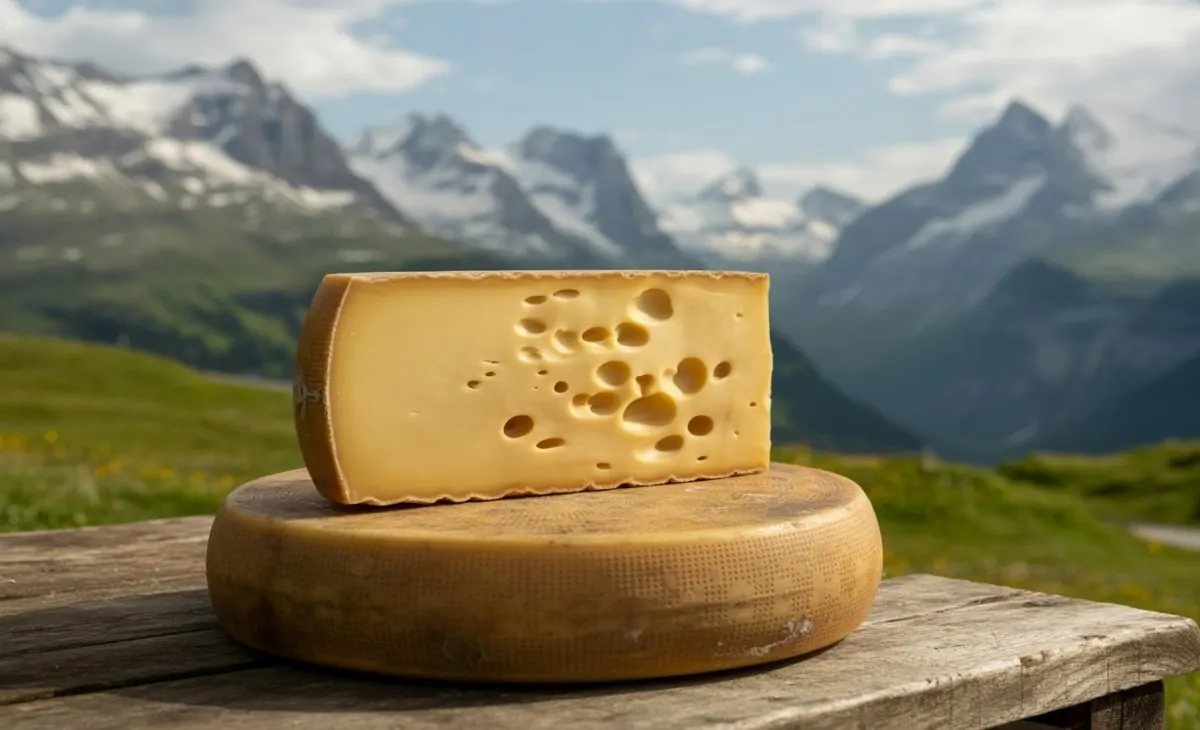There are cheeses we know—sharp cheddar, creamy brie, tangy blue. Then, there are cheeses we stumble upon like secrets whispered across mountains. Grouse cheese is one of those secrets. Grouse cheese, a product of rugged highlands and ancestral rhythm, not only arrives on your plate but also tells a captivating story.
Unrushed, unfiltered, and unmistakably wild, It is the dairy world’s best-kept secret, known to just a few discerning palates. Those who taste it don’t forget it. They chase it. Not for novelty, but for what it offers: a deep, layered experience drawn from wind-lashed pastures, wild herbs, and traditions that refuse to disappear quietly.
This isn’t cheese made for shelves—it’s cheese made for soul.
A Cheese Born From the Highlands, Not Factories
The name “Grouse cheese” might confuse at first glance. There’s no meat, no bird involved—just a nod to the moorlands where the red grouse bird roams and where this cheese finds its spirit. It hails from alpine and upland regions where the terrain is as unforgiving as it is breathtaking. Think of places where herders still use footpaths worn by centuries of repetition, and dairy herds graze on untouched botanicals rather than engineered feed.
You might find its origins spread across mountain belts in northern Italy, the Scottish Highlands, the Vosges in France, and even alpine Slovenia. But the soul remains consistent—It is a celebration of elevation, isolation, and intimacy with the land.
A Method Crafted by Nature, Perfected by Patience
To make to surrender to the rhythms of the earth. Nothing about it is rushed. Raw milk, rich in natural enzymes, is used within hours of milking. There is no pasteurization to strip the character or sterilize the soul. Curdling doesn’t depend on lab-cultured bacteria but on wild starters passed down through generations—or even plant-based coagulants like cardoon flower or nettle.
Maturation happens slowly, in cellars or mountain caves, often hand-flipped and brined in herbs or whey. Some are aged with juniper ash or rubbed in peat to mirror the earth they come from. Each wheel becomes its diary entry of a season—unique in flavor, appearance, and story.
Also Read this one: SkinPres T: The Smart Skincare Revolution That’s Quietly Changing
Grouse Cheese in the Mouth: A Tapestry of Taste
Describing Grouse cheese is like trying to bottle a landscape. It doesn’t hit you with boldness—it invites you in. A young wheel might be smooth, pliant, slightly nutty, with hints of wild thyme and clover. Matured versions deepen in character: crumbly, a touch smoky, and richly umami, like a cold forest floor after rain.
Close your eyes, and you’ll pick up notes of lichen, moss, resin, and an edge of stone-sweet minerality that only raw mountain milk can provide. It’s a cheese that doesn’t shout. It lingers. It stays with you like the scent of pine or the echo of a mountain stream.
Not Just a Cheese—A Living Artifact
Every wheel of Grouse cheese is small-batch, handmade, and seasonally constrained. The herds are tiny. The methods are ancestral. During production season, many producers still work without electricity in their mountain huts.
Culinary Use: From Rustic Tables to Michelin Kitchens
In the right kitchen, Grouse cheese transforms. Young, pliant wheels melt beautifully into gratins or rustic pies. Aged wedges become the secret twist in wild mushroom risottos or barley stews. Shaved over sourdough or melted into roasted root vegetables, it adds complexity without overwhelming.
That said, many argue it’s best served unadorned—cut into thick slices, warmed slightly by hand, and eaten with crusty bread, raw honey, or a sip of peated Scotch. Its raw essence calls for minimal interference.
More avant-garde chefs are now playing with it too—fermenting it further, creating foams, gels, or smoked pairings that elevate Grouse cheese from artisan tradition to culinary experiment.
Why the World Is Finally Noticing Grouse Cheese
For years, Grouse cheese was a local treasure. Families would share this treasure, serve it during solstice feasts, or barter it in village markets. But as interest in slow food, raw milk, and ancestral agriculture has surged, so has curiosity about this highland gem.
Boutique cheesemongers in cities like London, New York, and Tokyo now seek limited wheels. Some importers even maintain waiting lists. However, producers are not in a hurry to expand, nor should they be.
What draws people in isn’t just the taste. It’s the principle. It is reminds us of food that respects its roots and resists commodification.
A Tradition at Risk: What’s Threatening Grouse Cheese
But make no mistake—Grouse cheese exists on fragile ground. Climate change has altered pasture cycles. Warmer winters disturb the microbial life needed for aging. Meanwhile, aging producers struggle to pass the trade on to younger generations, many of whom migrate to cities or seek more stable livelihoods.
Raw milk regulations also pose a significant challenge. In many export markets, the rules grow tighter, threatening small-batch cheeses that don’t fit industrial models. And with every new imitation—a factory version without the wild diet or hand-touched aging—the risk of dilution grows.
The cheese may endure, but the tradition? That’s what needs saving.
Preservation Through Celebration
One glimmer of hope lies in formal recognition. Moves are underway to secure Protected Designation of Origin (PDO) status for Grouse cheese in regions like Trentino and the Scottish Highlands. NGOs are documenting its methods. Slow Food networks advocate for its safeguarding. Some culinary schools now include Grouse cheese production in their artisan programs.
But perhaps the best preservation tool is tasting itself. When you eat real Grouse cheese, you understand why it matters. This understanding is not just intellectual but also visceral.
Bringing Grouse Cheese Home: If You’re Lucky Enough
If you ever get your hands on a wheel—or even a wedge—handle it with reverence. Store it in waxed cloth or breathable paper. Never seal it in plastic. Let it come to room temperature before serving. Share it with people who listen when they eat.
And know that in your fridge lies not just food, but a piece of the mountains, a bite of history, a whisper of a culture trying to hold on.
FAQs About Grouse Cheese
Is Grouse cheese made from bird meat?
Not at all. The name refers to the highland regions where grouse birds roam, not any ingredient in the cheese itself.
What type of milk is used?
Traditionally, Grouse cheese is made from raw sheep’s milk or a mix of sheep and goat milk. The diet of the animals—wild herbs, grasses, and lichen—plays a huge role in its flavor.
What does Grouse cheese taste like?
Expect an earthy, herbaceous, slightly nutty flavor with notes of moss, peat, and wildflowers. Aged versions are sharper, more complex, and slightly smoky.
Where can I buy Grouse cheese?
Access is limited. Select artisan shops in Europe and rare importers in North America or Asia may carry it seasonally. Some producers sell directly via regional food festivals.
Can Grouse cheese be used in recipes?
Yes. It melts beautifully when young and can be grated or shaved when aged. But many prefer it simply sliced and savored with natural accompaniments.
Is Grouse cheese pasteurized?
Authentic is made from raw milk, preserving its wild microbial complexity. Factory versions may use pasteurized milk but lack the same depth.
Conclusion: Grouse Cheese as a Philosophy, Not Just Food
To understand Grouse cheese is to understand a kind of quiet resistance—a belief that not all things should be rushed, standardized, or explained. It’s not here to win awards or fill shelves. It aims to leave a lasting impression, capturing the essence of each bite.


